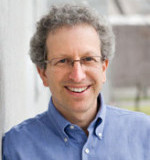
Individuals in economically disadvantaged neighborhoods fare less well across a range of indicators, but to what extent do poor neighborhoods per se contribute to this? Investigating the answer, which requires isolating the effect of neighborhoods, can help policymakers craft more effective anti-poverty policies.
This was the motivation behind the Moving to Opportunity (MTO) demonstration, one of the most important studies of poverty and the effects of neighborhoods in the United States. MTO was a randomized social experiment sponsored by the U.S. Department of Housing and Urban Development. It launched in 1994 and involved almost 5,000 families with children living in high-poverty public housing projects in five cities: Baltimore, Boston, Chicago, Los Angeles, and New York City.
To learn more about the MTO demonstration — including the questions that motivated the study, the study design, and its results — we’re joined by Lawrence Katz, an economics professor at Harvard University who helped lead the long-term, 15-year evaluation of MTO.